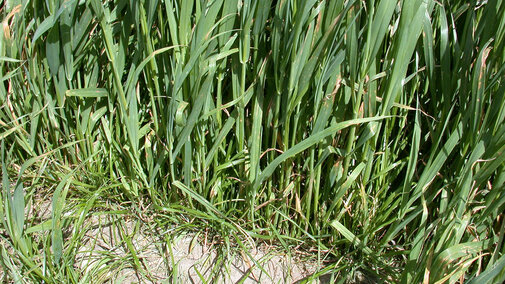Planning for Spring Annual Forages
While we are still early in the new year, it is time to start planning and thinking about any spring annual forages that we might plant. Part of the process may be anticipating a need for extra feed or booking seed early for possible discounts.
For spring or cool-season annual forages, the planting period is typically late March to early April, or when soil temperatures are in the 42- to 45-degree range. Oats are probably the most common cool-season annual forage planted in Nebraska. However, spring triticale or spring barley are two other small grain options that have been found to perform similarly to oats in terms of forage yield and quality.
Also similar is the number of days until ready to begin grazing or hay, so the different species could be mixed if desired. One could look at seed cost of the different species before making a decision.
With the early spring planting date of the cool-season annuals, grazing can typically begin around the third or fourth week of May and last into early July. Haying usually takes place around the third week of June.
If grazing is a primary goal, Italian ryegrass could be included in a mix with the cereal grains and this will result in a longer grazing period. Field peas are another species that could be included to enhance forage quality and provide some nitrogen fixation.
Don’t forget to consider the herbicides that may have been used on a field the previous year. Some herbicides have long residuals that could hinder establishment even into this spring.
Cereal Silage Management
Cereal grain crops such as wheat, triticale, oats and rye have become popular as spring harvested forages. Compared to traditional haying, silage harvest can occur earlier while forages have higher moisture content. This then allows the next subsequent crop, such as corn for silage, to be planted earlier for an extended growing period.
Nebraska Extension research indicates that waiting until cereal crops reach the soft dough grain stage may offer the best timing for silage harvest. The target dry matter content for cereal silage to properly ferment is 30-35%. A statewide cereal silage study revealed that 50% of the harvest samples achieved the target moisture range. About 10% were too dry; 40% were too wet, partially due to wilting time being too short. When silage is too dry, then it is harder to get an adequate silage pack, which increases nutrient losses and lowers palatability. Conversely, when silage is too wet, fermentation can result in slimy silage where the higher butyric acid bacteria numbers start taking over, resulting in higher total digestible nutrient (TDN) losses.
In this study, average TDN losses were five units. The highest TDN of 65% occurred at the boot development stage but decreased to the mid-50% during the milk kernel stage, then increased to almost 58% TDN as development moved to soft dough.
Cereal crop hollow stems can cause packing challenges. The average study bulk density of 4.86 lbs. per cubic foot was well below the published target silage bulk density. Smaller forage chopping size can increase bulk density, but also causes harvest equipment to use more fuel. Another competing theme for dairy producers is the preference for longer chopped forages to increase fiber content.

